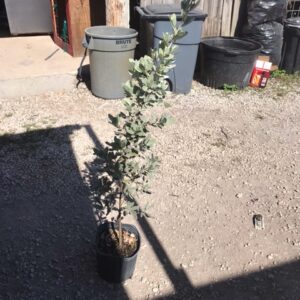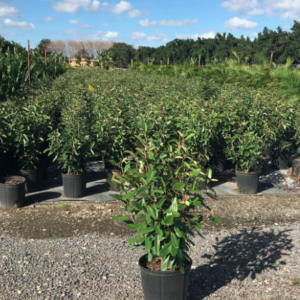General Landscape Uses: Specimen or shade tree in residential and commercial landscapes.
Description: Medium to large tree with an irregular, rounded crown. Trunks large, erect, buttressed at the base, to 3 feet in diameter. Bark brown to gray brown or reddish-brown, thick, broken into thick plates exposing inner bark. Leaves glossy, dark green to yellowish-green with a wavy margin, 2-6 inches long.
Dimensions: Typically 30-60 feet in height; to 118 feet in South Florida. Taller than broad.
Growth Rate: Moderate.
Range: Monroe County Keys north, mostly along the coasts, to Volusia and Manatee counties; West Indies and Mexico. Very rare in the middle and lower Monroe County Keys.
Habitats: Hammocks.
Soils: Moist, well-drained sandy or limestone soils, with humusy top layer.
Nutritional Requirements: Moderate; can grow in nutrient poor soils, but needs some organic content to thrive.
Salt Water Tolerance: Low; does not tolerate long-term flooding by salt or brackish water.
Salt Wind Tolerance: High; can tolerate moderate amounts of salt wind without significant injury.
Drought Tolerance: High; does not require any supplemental water once established.
Light Requirements: Full sun.
Flower Color: Greenish-yellow.
Flower Characteristics: Inconspicuous but foul-smelling.
Flowering Season: Spring-fall; peak in summer.
Fruit: Yellow-orange berry, about 1″ long. Edible. Winter-summer.
Wildlife and Ecology: Provides significant food and cover for wildlife. pollinators
Horticultural Notes: Can be grown from seed.
Comments: The fruits are edible raw, but the latex is very sticky. The wood is used for ship building in the West Indies.










Reviews
There are no reviews yet.